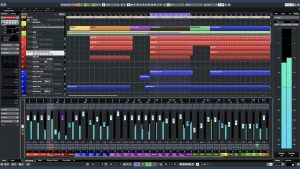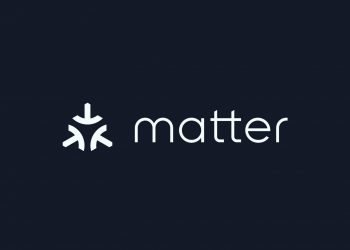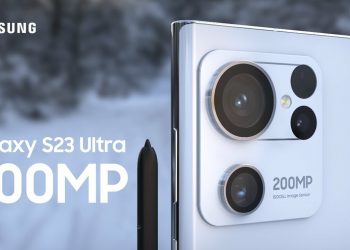Updated on September 25th, 2021
The developing technology has brought new gear for audio designers and music producers. Five decades ago, if you walk into a production studio, the place would be filled with a huge array of wires, tapes, and analog equipment. Since the invention of various types of software, music producers also got their own. The equipment that is used to take up an entire room is now replaced by a single piece of software which is housed in a tiny box called a computer or a laptop called DAW (Digital Audio Workstation).
DAWs are commonly used to record, acquire and save multiple tracks of audio, and to mix, equalize, and add audio effects to a track as the music producer wants. This software generally has access to libraries of sounds and tracks which are used to create electronic music from scratch. The software found in most recording studios is commercial DAWs that can be hardware integrated into computers. Apart from music, DAWs are also used in the production of radio, television, film, podcasts, and games.
DAWs support smaller pieces of software with unique functionality called plugins. This expands the abilities of the workstation. Plugins are pieces of code that can be installed in a DAW to enhance its functionality. Usually, plugins fall under the categories of audio signal processing, analysis, or sound synthesis. Typical plugins include equalization, dynamic range control, reverberation, delay, and virtual instruments.
There are four main functions of a DAW, which were held in separate programs in the past. Now, these four functions are packaged into a single DAW. These features include a digital audio processor to record, edit, and mix audio digitally; a MIDI sequencer to record, edit and mix MIDI notes; virtual instruments that receive MIDI information and translate it to different instrument sounds and music notation that turns MIDI notes into printable sheet music.
DAW software can be confusing for a beginner as it has multiple functionalities. You would need considerable time to explore all the features of a DAW. There are DAW for beginners that can ease you into the process of audio editing and mixing. Here are some of the best DAW for beginners for your begin your DJ practice.
Best DAW for Beginners – Our Reviews and Comparisons
1. GarageBand
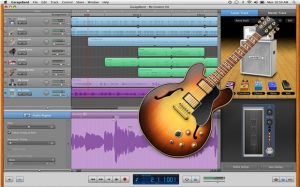
GarageBand is a free, easy-to-navigate DAW that comes free with the purchase of Apple products. If you have a new iPhone, iPad, or MacBook, you will find GarageBand on that device. MacBooks are a blessing to beginner audio producers as they provide a computer and a DAW in one purchase. It is famous for its audio loops, virtual instruments, and its beginner-friendly features. Once you complete editing and mixing your tracks, you can easily AirDrop/ distribute it to iTunes and Soundcloud. There are up to 100 EDM and Hip Hop-inspired synth sounds. Every synth features the Transform Pad Smart Control, so you can tweak sounds to your liking.
Many indie producers have gotten their started music production with GarageBand as their DAW. If you music production your passion and you want to record professionally, the DAW will serve as your training base for the professional level DAW Logic. GarageBand is the entry-level version of Apple’s more complex Logic which has enhanced features. There are a lot of professionals who have used GarageBand to create melodies and beats. Some examples include Steve Lacy in Kendrick Lamar’s “Damn,” and The Internet’s “Ego Death”, Grimes in Visions LP, Rihanna in “Umbrella” among others.
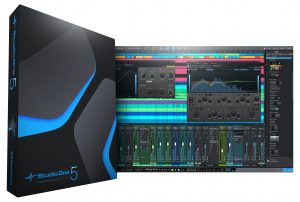
Ater GarageBand, Studio One 5 is one of the best DAW for beginners. Presonus has implemented a single-window approach with this workstation. Equipped with the ability to drag-and-drop audio, plugins, and instruments it is quite simple to navigate and you can also quickly build up your tracks. Every control is available on a single page therefore, masses of processes are right on the tip of your mouse.
There are scratch pads so you can scratch sounds DJ style. You can add song markers, key changes, chords, and structures to your tracks. You can work on multiple ideas and try them out against each other. You can also undo changes in the mixer.
A great range of virtual instruments is built in that covers most of what you will be using frequently. Another notable feature is that you can edit your MIDI as patterns, piano roll, and as a full score.
3. Ableton Live

Ableton Live’s interface has a clean and simple design making it beginner-friendly. This DAW is a good pick for beginner producers for several reasons. The trial version is free, so you can try mixing some songs and see if it works for you.
Ableton houses multiple tutorials that help beginners learn the software fast. There are numerous capabilities for this software compared to other DAWs.
Ableton has an intuitive interface to make it easy for beginners. There is no clutter of controls or hidden sub-menus and tools. There is a session cow that helps you create clips with loops of a specific sound or instrument. Put these clips together and you have your first song.
Cubase from Steinberg is regarded as the industry standard when it comes to music production. Cubase has upgraded to the 11ty version of its software and is one of the best beginner DAWs in the market. With each upgrade, the company revises the workflow and adds new features to the system.
This software is versatile software that is enough to handle any music genre. The basic controls are easy to use and understand which makes Cubase more convenient for beginners. The DAW is equipped with a Combine Select Tools Mode. This allows you to apply multiple parameters at once, therefore you don't have to switch tools while you are trying to mix. You can easily combine selection tools for different objects and ranges.
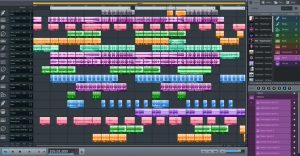
The MAGIX Music Maker is a DAW that was quick to attract the attention of music producers. This software is for both beginners and professionals. It has an easy mode feature that helps learners mix music effortlessly. The intuitive interface jumpstarts a beginner to lay drum loops, add sounds, and be mixing and playing around with their tracks in no time.
It has several options for importing and exporting finished files. A verified user can access a large library of voices, sound effects, and orloops. The DAW houses to lay drum loops, add sounds, and be mixing and playing around with their tracks in no time. The editing suite highlights a channel mixer, effects previewer, infinite cute points, equalizer, and frequency tuner.
Beginning Audio Production
All accomplished audio producers impressive their skills with lots of practice. While it takes anywhere from a few weeks to months to learn software and its controls thoroughly, it will be another few weeks before you mix a decent track with your lessons. Downloading songs, tweaking them, and adding sound effects and reverbs will help you learn how three effects mix with your tracks and alert them.
Going through a couple of rounds of mixing every day can make you an expert. The more control you have on your audio recording environment, the better your production will be. The famous hip-hop star Kanye West has a set of rules in his studio to reduce distractions while he is producing music. Take tips from accomplished musicians. If you are working from a home recording studio, you will know what notes/effects are mixed into your audio tracks and understand how it will sound on the other side of your recording software.
Mixing software can have steep learning curves.
As mentioned earlier, regardless of the DAW you choose, even the simplest can take significant time to master. Spend time with tutorials to see how a DAW may be a good fit for your purpose. After trying trial versions finally you will find one that will fit your work.
More to read:
Top 5 DAW Softwares for Ultimate Music Production
We hope you love our reviews! For your information, we do earn money from commission in the link in the content! For more information click here!


